 Eating the right things to help your body can be a challenge, but with the proper know how, prep and ingredients, you can have a great wholesome meal. But how do you continue that great eating on the bike? You have to carry everything, eat it while you ride, and then the same foods you may eat at other times in the day don’t sit well. The same preparation, know how, and ingredients can make the food you eat during your ride not only taste good but can fuel your long hard rides and keep you feeling great throughout.
Eating the right things to help your body can be a challenge, but with the proper know how, prep and ingredients, you can have a great wholesome meal. But how do you continue that great eating on the bike? You have to carry everything, eat it while you ride, and then the same foods you may eat at other times in the day don’t sit well. The same preparation, know how, and ingredients can make the food you eat during your ride not only taste good but can fuel your long hard rides and keep you feeling great throughout.
Nutrients
Eating great on the bike starts with what you eat. You are not only eating to satisfy your hunger but to continually fuel your body and keep it near its maximum. If you just eat whatever, it can leave you feeling empty as well as with an upset stomach. The three main components of nutrition: carbohydrates, protein and fat all contribute to your energy output. Your body burns carbohydrates for energy but can also get them through converting fat to carbs and can burn protein for energy if your carbohydrate and fat stores run out.
In general, you want all three in anything that you eat on the bike. The ratio is what changes when you ride longer and easier to harder and shorter. Longer endurance rides should be fueled with a higher ratio of protein and fat as your body isn’t going hard enough to require the use of as many carbohydrates. As you ride harder, when your legs start to burn going over a climb, that’s when your body is burning straight carbohydrates. If you do this repeatedly, that is when you need to up your carbohydrates and lower the protein and fat. Think protein and fat equals slow burning. Carbohydrates equal fast burning.
What to Eat While Cycling
Many bars and other ride specific foods will say what their intended purpose is as well as show how many carbs, proteins, and fats, are in them. These are easier. Just read and you’re set. Bars and other processed foods however aren’t always the best option when riding. They are easy and convenient but when you can, real food should be sought out. This includes things like homemade bars and cookies as well as things like bananas and dates. These can be easier on your stomach to digest, cheaper and overall, better for your body.
Other good foods to be made are sandwiches, pancakes, and waffles. Sandwiches can be eaten at stops provided you aren’t riding too hard. Just don’t eat too much at once. Pancakes and waffles, provided that they are made with more than just white flour, but rather with whole grain flours, nuts, seeds, and berries, can be a great option for a pre-ride breakfast and then the leftovers topped with jam or peanut butter to take on the ride. Other foods such as homemade rice cakes with scrambled egg, bacon, and blueberries can be a delicious treat as well as a great fuel.
Ease of Eating While Cycling
Anything that you eat on the bike needs to be able to be eaten quickly and easily. This means that it is packaged in a way that is easy to open and then doesn’t fall apart before you can eat it. Bars, gels, and other ride ready foods are great for this, especially when riding in a group or a race. If you make your own food however you need to make sure that it is packaged in a way that it can fit in your jersey pocket as well as can be easily opened and eaten.
Probably the easiest and most versatile way of doing this is using aluminum foil. Cut the foil so it’s a large enough square and wrap the contents almost like a present but leaving one side or end with an easy open flap to quickly access what’s inside. Any food you make or bring also should be relatively easy to chew and swallow while riding. Some ride bars, specifically protein bars, can be hard to chew along with other foods being a bit too messy such as chocolate.
Ride food can be tricky but planning ahead and knowing what to eat and when will help you to stay strong throughout your ride. As with any food, trial and error will show you what works best as everything doesn’t work for everyone. Some foods may make your stomach upset, other foods you find just don’t quite give you as much energy.
On your shorter training rides test different foods that way if something doesn’t work out you are not far from home and can complete the ride. Trying something new on a longer ride, or worse in an event, can be the recipe for a bad stomach, low energy, and not the greatest time. Fuel properly and your rides will not only be faster and easier but also tastier.
Food Ideas
-Homemade Rice Cakes (these can be made in any number of ways with eggs, dates, bananas, bacon, blueberries, the list is endless.)
-Salt potatoes with olive oil and parmesan.
-Hearty pancakes with peanut butter and jam folded in the middle.
-Hearty waffles with peanut butter and jam folded in the middle.
-Peanut butter and jelly sandwich.
-Turkey/ham sandwich or wrap.
-Nut bars made from an assortment of nuts and honey.
-Date bars.
-Dates.
-Bananas.
-Hearty sweet breads such as banana, zucchini, carrot, etc.
-Healthy cookies with less sugar and butter. Add whole grain flours, oats, nuts, and raisins.
Need to know how to make some of these recipes? The Feed Zone Portables Cookbook gives great recipes for your ride!
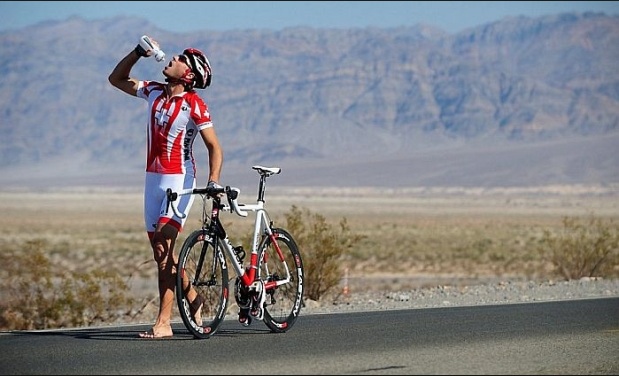
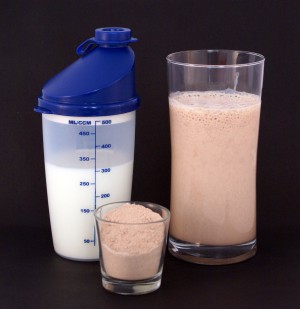
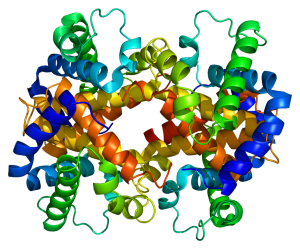
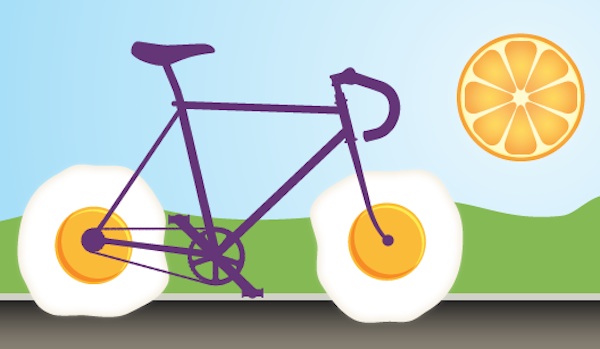 Because biking burns your calories, it’s a bad idea to burn calories you don’t have. By doing so you’ll feel sluggish, hungry, and won’t be motivated to finish your training. Researchers have found that people who eat a breakfast before exercise are able to go for 16 percent longer than those who didn’t eat breakfast. Below you’ll find some good options regarding breakfast for cyclists.
Because biking burns your calories, it’s a bad idea to burn calories you don’t have. By doing so you’ll feel sluggish, hungry, and won’t be motivated to finish your training. Researchers have found that people who eat a breakfast before exercise are able to go for 16 percent longer than those who didn’t eat breakfast. Below you’ll find some good options regarding breakfast for cyclists.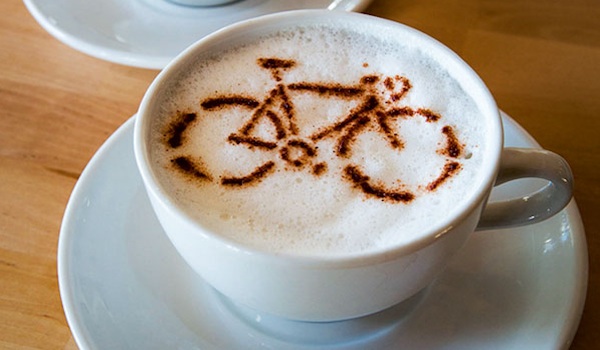 For many of us, the day doesn’t really begin until we’ve had that first cup of coffee, and a long ride isn’t really complete without the post-ride coffee break. But what exactly is that shot of espresso doing to your body, and how is it affecting your performance?
For many of us, the day doesn’t really begin until we’ve had that first cup of coffee, and a long ride isn’t really complete without the post-ride coffee break. But what exactly is that shot of espresso doing to your body, and how is it affecting your performance? 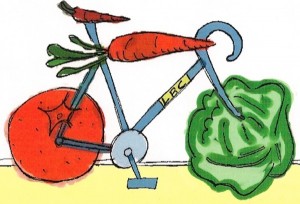
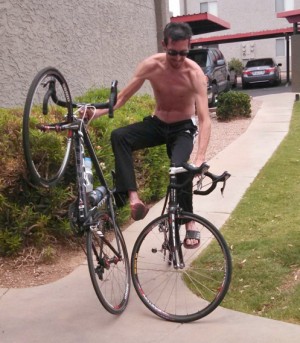 Scott Price is a unique cycling coach that is at the leading edge of what the future of sport will look like. Highly conscious, highly intuitive, personally responsible athletes creating incredible performance, experiences and raising the bar for all humanity. Scott is applying his lifetime of knowledge, study, experience of racing with grand tour greats and scoring over 100 victories in over 1,000 endurance events to provide remote coaching to athletes that want to discover what we are really capable of physically as well as the internal state we embody. In walking this walk, when you team up with Scott and his coaching program you gain a wealth of knowledge, inspiration, an advocate and a friend that only cares about your highest good and best interest. The challenges we take on are at the heart of what it is to be alive and it can be awesome.
Scott Price is a unique cycling coach that is at the leading edge of what the future of sport will look like. Highly conscious, highly intuitive, personally responsible athletes creating incredible performance, experiences and raising the bar for all humanity. Scott is applying his lifetime of knowledge, study, experience of racing with grand tour greats and scoring over 100 victories in over 1,000 endurance events to provide remote coaching to athletes that want to discover what we are really capable of physically as well as the internal state we embody. In walking this walk, when you team up with Scott and his coaching program you gain a wealth of knowledge, inspiration, an advocate and a friend that only cares about your highest good and best interest. The challenges we take on are at the heart of what it is to be alive and it can be awesome.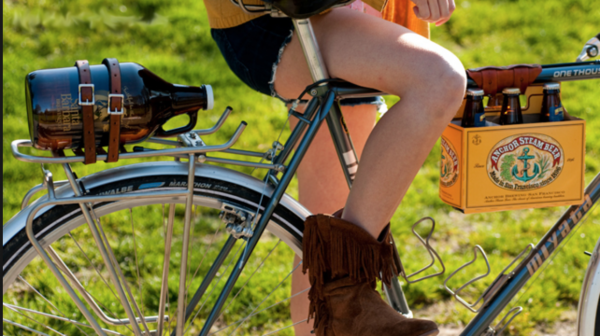 I’m probably not the only person who has sat down after a long hard ride and enjoyed a nice cold pint of beer. I’m also probably not the only person who has felt a tad guilty afterwards – the responsible athlete inside reminding me that my recovery would have been helped more by a bottle of Gatorade rather than a nice golden ale. That guilt might be somewhat misplaced though.
I’m probably not the only person who has sat down after a long hard ride and enjoyed a nice cold pint of beer. I’m also probably not the only person who has felt a tad guilty afterwards – the responsible athlete inside reminding me that my recovery would have been helped more by a bottle of Gatorade rather than a nice golden ale. That guilt might be somewhat misplaced though.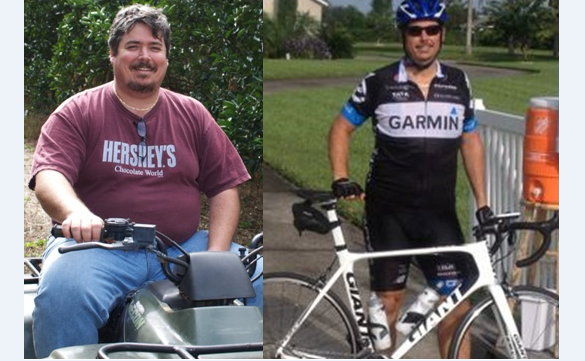 Burn more calories than you take in to lose weight… wow… tell me something I don’t know! The following list is a little more creative:
Burn more calories than you take in to lose weight… wow… tell me something I don’t know! The following list is a little more creative: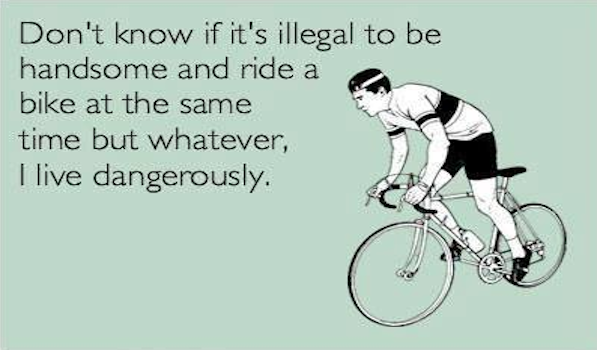 Cycling–like most cardio workouts–is a fun and efficient way to lose weight. The average person will burn about 500 – 800
Cycling–like most cardio workouts–is a fun and efficient way to lose weight. The average person will burn about 500 – 800